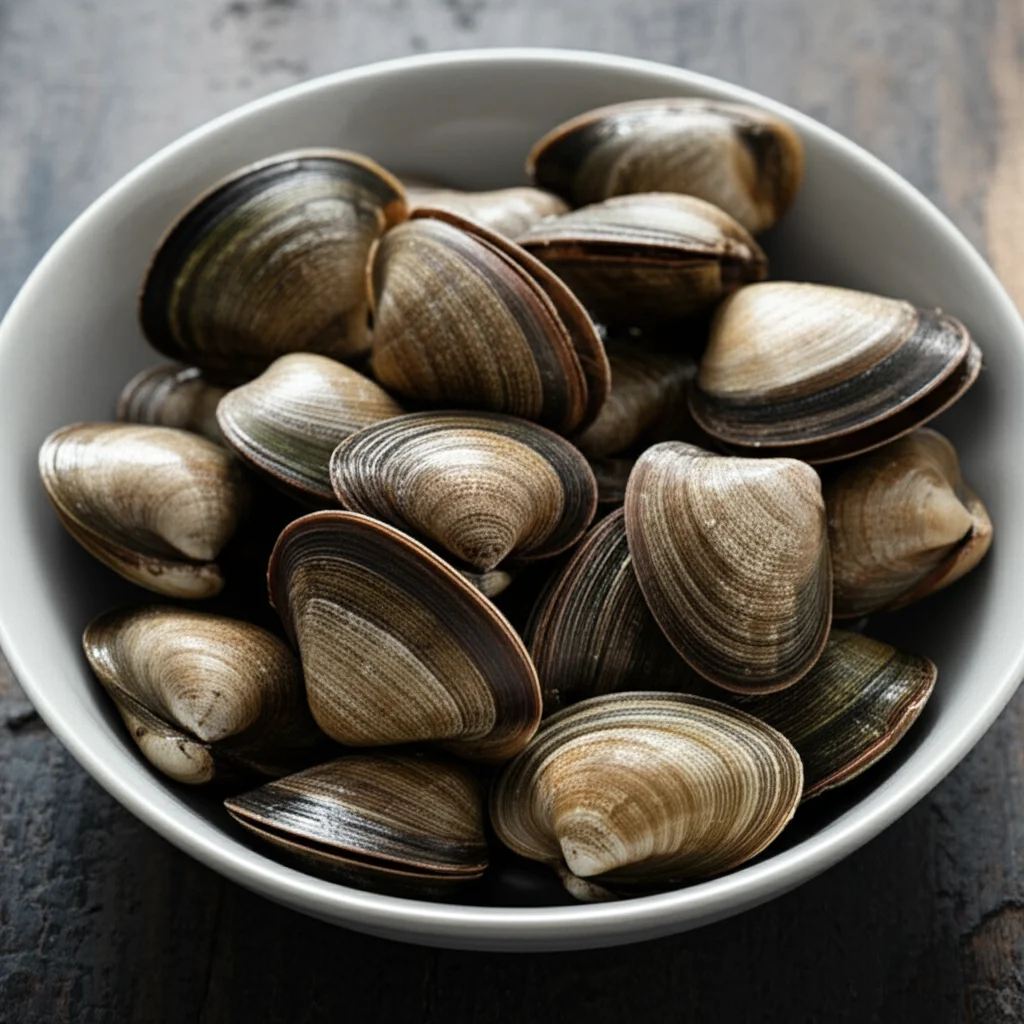· Todd Martin · Food Preparation · 15 min read
How To Clean Tuna

Master How To Clean Tuna for Fresh, Delicious Meals
Have you ever brought home a beautiful, whole tuna and wondered where to start? Cleaning tuna at home can seem like a big job. However, it is a skill that makes your fresh fish taste even better. Properly cleaning tuna removes unwanted parts. It also ensures the best flavor and texture for your cooking. This guide breaks down the process. We will walk you through each step. You will learn everything from preparation to storing your cleaned fish. Get ready to prepare tuna like a pro.
This article teaches you the steps for cleaning tuna. We cover essential tools and safety tips. You will learn how to gut, gill, and fillet your tuna. We also discuss removing the skin and bloodline. Finally, we provide advice on how to store your cleaned tuna. You will gain confidence in handling this magnificent fish.
Takeaway
- Gather Tools: Get sharp knives, a large cutting board, and gloves ready.
- Work Clean: Set up a clean space with easy access to water and waste bins.
- Gut Quickly: Remove entrails and gills soon after catching to maintain freshness.
- Fillet with Care: Cut precisely along the backbone to maximize meat yield.
- Remove Bloodline: Take out the dark bloodline for a cleaner taste and better texture.
- Store Properly: Rinse, pat dry, and chill or freeze cleaned tuna right away.
Cleaning tuna involves a series of precise steps. You start by preparing your workspace and tools. Then, you gut and gill the fish to remove internal organs. Next, you remove the head, tail, and fins. Finally, you fillet the fish, skin it, and remove the bloodline. This process ensures fresh, high-quality tuna for cooking.
Understanding Your Catch: Why Proper Tuna Cleaning Matters
When you bring home a whole tuna, its quality depends on how you clean it. Proper cleaning is not just about making the fish look nice. It also keeps the meat safe and extends its freshness. Tuna is a large fish. It needs specific handling to get the best results. I find that taking the time to do this step right always pays off. The flavor difference is clear.
Cleaning tuna correctly preserves its rich flavor. Unwanted parts, like guts and gills, can spoil the meat quickly. They hold enzymes and bacteria that break down flesh. Removing these parts fast stops this process. This means your tuna will taste fresh and pure. It won’t have any off-flavors.
Food safety is another big reason for proper cleaning. Fish, like any meat, can carry harmful bacteria. Cleaning removes most of these risks. You wash away surface contaminants. You also remove any parts that might harbor bacteria. Good hygiene during cleaning prevents cross-contamination. Always keep your work area and tools sanitized. This step is as important as the cuts you make.
Proper cleaning also helps you get the most meat from your fish. Knowing where to cut minimizes waste. You learn how to separate the valuable fillets from bone and skin. This skill saves you money. It also gives you more delicious tuna to enjoy. A well-cleaned tuna yields beautiful, large steaks or loins. These pieces are perfect for grilling, searing, or even sushi. It really lets you appreciate the effort.
Getting Ready: Essential Tools and Workspace Setup for Tuna Cleaning
Before you start cleaning tuna, gather all your tools. Having everything ready saves time. It also makes the process smoother. The right equipment helps you work safely and efficiently. I always make sure my knives are sharp before I even touch the fish. This simple step prevents accidents and makes cutting much easier.
You will need several types of knives. A long, sturdy breaking knife is good for large cuts. A flexible fillet knife helps separate meat from bone. A small, sharp paring knife can assist with detail work. Ensure all knives are razor-sharp. Dull knives are more dangerous because they require more force. They also make messy cuts, which wastes meat.
A large, non-slip cutting board is a must. Tuna is big and slippery. A stable surface prevents the fish from moving around. You might need a board at least 24x36 inches for a decent-sized tuna. Some people use a dedicated plastic board that can be thoroughly cleaned. This stops flavors from lingering. You also need heavy-duty gloves. These protect your hands from sharp fins and knives. They also keep your hands clean.
Prepare your workspace for hygiene. Cleaning tuna can be messy. Cover your work surface with newspaper or plastic sheeting. Have large bins ready. One bin is for fish waste like guts and heads. Another bin can hold your cleaned tuna parts temporarily. Access to running water is helpful for rinsing. An ice bath or a large cooler with ice is critical. This keeps the tuna meat cold. It stops bacteria growth and maintains quality. You can also learn about cleaning other kitchen tools like how to clean your skillet after you finish your fish preparation.
The First Cut: Gutting and Gilling Your Tuna
Gutting and gilling are the first critical steps in cleaning tuna. Doing this quickly helps preserve the fish’s freshness. The internal organs contain enzymes that break down fish flesh rapidly. Removing them fast stops this spoilage. I aim to do this as soon as possible after the fish is caught. This quick action protects the quality of the meat.
First, give the tuna a quick rinse with cold water. This washes off any loose scales or debris. Place the fish on your cutting board. Position it so its belly faces you. Take your breaking knife. Make a shallow cut along the belly from the vent (anus) up to the gill plate. Be careful not to cut too deep into the organs themselves. A shallow cut prevents puncturing the stomach or intestines.
Once the initial cut is made, open the cavity. Reach inside and carefully pull out all the organs. You might need to use your hands to scoop them out. Make sure to remove everything, including the liver, stomach, and intestines. Some parts might be attached near the backbone. Scrape them out thoroughly. Dispose of these guts immediately in your waste bin. They can smell strongly.
Next, focus on the gills. Gills are located inside the gill covers on both sides of the tuna’s head. They look feathery and red. Gills contain a lot of blood. This blood can taint the meat if left in too long. Use a strong pair of shears or your knife to cut the gills away from where they attach to the fish. There are typically four arches on each side. Remove them entirely. This part can be a bit challenging due to their firm attachment. You might find similar steps for other seafood, like when you clean crab.
After removing the guts and gills, rinse the body cavity thoroughly with cold water. Use your fingers or a brush to clean out any remaining blood or tissue. Pay special attention to the bloodline along the spine. This main blood vessel runs the length of the fish. Some people scrape this out now, but it is easier to remove during filleting. Ensure the cavity is clean before moving on. A clean cavity means better-tasting tuna.
Breaking Down the Fish: Head, Tail, and Fin Removal
After gutting and gilling, you prepare the tuna for filleting. This involves removing the head, tail, and fins. These parts are typically discarded or used for stock. Taking them off makes the filleting process much simpler. It also gives you a more manageable piece of fish to work with. I find this stage makes the tuna less intimidating.
To remove the head, lay the tuna on its side. Locate the collarbone area, just behind the gills. Make a deep cut behind the pectoral fins. Cut straight down through the flesh and bone. You might need to apply significant pressure or even use a saw for very large tuna. Angle your knife slightly towards the head to save as much meat as possible. Cut from one side, then flip the fish and cut from the other. The head should come off cleanly. Discard the head or save it for fish stock if you wish.
Next, remove the tail. The tail fin itself does not contain much meat. It also takes up space on your cutting board. Cut straight across the caudal peduncle, which is the narrow part of the body before the tail fin. Leave about an inch of the peduncle attached to the body. This provides a handle for easier filleting later. A clean cut here prepares the fish for the next steps.
Finally, trim off the remaining fins. These include the dorsal fins on the back and the anal fins on the belly. Use a sharp knife or strong shears. Cut close to the body, removing the entire fin structure. Fins can be sharp and get in the way during filleting. Removing them now makes handling the fish safer. It also streamlines the filleting process. This trimming leaves you with a clean, headless, tailless, and finless tuna body. It is now ready for efficient filleting into loins or steaks.
Mastering the Fillet: How to Cut Tuna Steaks and Loins
Filleting tuna is where you turn a whole fish into usable pieces of meat. This step requires precision and a good fillet knife. The goal is to separate the meat from the backbone with minimal waste. Learning this technique helps you get the most out of your tuna. It is a rewarding part of the cleaning process.
Lay the tuna on its side, with the back facing up. Make an incision along the top of the backbone, from where the head was to the tail. Cut down until you feel the bones. Next, make another incision along the belly, following the curve of the ribs. Connect this cut to the one along the backbone near the tail. This creates a guide for your fillet knife.
Now, take your flexible fillet knife. Start at the head end. Insert the knife into the incision along the backbone. Keep the knife blade flat against the bones. Use long, smooth strokes. Work your way down the length of the fish. The blade should glide over the ribs and backbone. Angle the knife slightly downwards to hug the bones tightly. This ensures you leave very little meat on the skeleton.
As you cut, gently lift the fillet away from the bones. Continue cutting until the entire side of the tuna is detached. You will have a large, boneless loin. Flip the tuna over and repeat the process on the other side. You will now have two large tuna loins. These are often called “quarters” in the tuna industry. Handle them with care to avoid bruising the meat. The techniques for filleting are crucial. This is similar to handling other seafood, like when you learn how to clean shrimp or how to clean lobster for optimal yield.
After removing the main loins, you may find smaller pieces of meat near the belly or collar. These are called belly flaps or collars. They are often rich in fat and flavor. You can trim these off separately. They make excellent pieces for grilling or searing. This careful filleting ensures you maximize the edible parts of the tuna.
Refining Your Tuna: Skinning and Removing the Bloodline
Once you have your tuna loins, the final steps are skinning them and removing the bloodline. These steps greatly improve the taste, texture, and appearance of your tuna. They are essential for sashimi-grade tuna. Even for cooked tuna, these steps create a cleaner, more enjoyable eating experience. I always make sure to do this part thoroughly.
To skin the tuna loin, lay it skin-side down on your cutting board. Hold one end of the loin firmly. Take your sharp fillet knife. Insert the blade between the skin and the meat at a shallow angle. Keep the knife almost flat against the skin. Start to pull the skin away from the meat with your free hand. As you pull, gently move the knife back and forth. The key is to keep the blade tight against the skin. This leaves all the valuable meat attached to the loin. Work slowly and steadily until the entire skin is removed.
After skinning, you will see a dark red or brownish line running through the center of the loin. This is the bloodline. It is a strip of darker, stronger-flavored meat. This part often has a metallic or fishy taste. It can also have a different texture. Most people prefer to remove it, especially for raw preparations like sashimi.
To remove the bloodline, make a V-cut along its entire length. Start by making a shallow cut along one side of the bloodline. Then, make another shallow cut along the other side. Angle your knife so the two cuts meet under the bloodline. This lifts the entire dark strip out. You will be left with two cleaner, lighter-colored pieces of tuna meat. Discard the bloodline. You might also notice some very dark, fatty areas along the edges of the loin. These are sometimes called “dark meat.” You can trim these off as well for a milder flavor. This step really makes the tuna suitable for a wider range of dishes.
Post-Cleaning Care: Storing Your Fresh Tuna
After all your hard work cleaning tuna, proper storage is crucial. It keeps your fish fresh and safe until you cook it. Improper storage can ruin your perfectly cleaned tuna quickly. I make sure to follow these steps every time to lock in that freshness. It protects your investment of time and effort.
First, give your cleaned tuna pieces a final rinse under cold water. This washes away any small bits of bone or remaining blood. Pat the tuna completely dry with paper towels. Excess moisture speeds up spoilage. Dry tuna also cooks better, especially if you plan to sear it. Water on the surface can prevent a good crust from forming.
For immediate use (within 1-2 days), store the tuna in the refrigerator. Wrap each piece tightly in plastic wrap. Then, place the wrapped tuna in an airtight container or a Ziploc bag. This creates a barrier against air and odors. Put the container on a bed of ice in the coldest part of your refrigerator. Change the ice daily if it melts. Keeping the tuna very cold is key.
For longer storage, freezing is your best option. Flash-freezing tuna helps maintain its quality. Wrap individual portions tightly in plastic wrap. Then, wrap them again in aluminum foil or vacuum seal them. The goal is to prevent air exposure, which causes freezer burn. Label each package with the date.
Place the wrapped tuna in the coldest part of your freezer. It can last for several months this way. When you are ready to use it, thaw frozen tuna slowly in the refrigerator overnight. Avoid thawing at room temperature. This slow thawing helps maintain the tuna’s texture and flavor. Remember, proper handling and prompt storage protect your tuna’s quality.
Frequently Asked Questions
How do you keep tuna fresh after cleaning?
After cleaning tuna, rinse it, pat it completely dry, and wrap it tightly in plastic wrap. Place the wrapped tuna in an airtight container on a bed of ice in the coldest part of your refrigerator. Change the ice daily. For longer storage, vacuum seal or wrap tightly in plastic and foil, then freeze.
What tools do I need to clean a whole tuna?
You need a sturdy breaking knife, a flexible fillet knife, and possibly a smaller paring knife. You also need a large, non-slip cutting board, heavy-duty gloves, large bins for waste, and an ice bath or cooler for chilling the cleaned fish. Sharp tools make the job safer and easier.
Is it necessary to remove the bloodline from tuna?
Yes, it is highly recommended to remove the bloodline from tuna. The bloodline is a strip of darker, stronger-flavored meat running through the loin. It can have a metallic or “fishy” taste and a different texture. Removing it yields a cleaner-tasting, more appealing piece of tuna, especially for raw consumption.
Can you clean tuna at home for sashimi?
Absolutely. Cleaning tuna at home for sashimi requires strict attention to hygiene and proper technique. You must ensure the fish is extremely fresh. Follow all steps for gutting, gilling, filleting, skinning, and thoroughly removing the bloodline. Rapid chilling and careful handling are essential to maintain sashimi-grade quality.
How long does cleaned tuna last in the refrigerator?
Cleaned tuna, when stored properly on ice in an airtight container in the refrigerator, will typically last for 1 to 2 days. It is best to cook or freeze it within this timeframe to ensure optimal freshness and safety. Always check for any off-odors or slimy texture before use.
Conclusion
Cleaning tuna at home is a skill that empowers you to enjoy fresh, high-quality seafood. It might seem daunting at first, but with the right tools and a step-by-step approach, you can master it. From understanding why proper cleaning matters to carefully filleting and storing your fish, each step contributes to a superior culinary experience. I hope this guide helps you feel confident.
Remember, a freshly cleaned tuna offers unmatched flavor and texture. You control the quality from start to finish. This process not only saves you money but also connects you more deeply with your food. Practice makes perfect, and each tuna you clean will build your expertise.
Now that you know how to clean tuna, you are ready for your next catch. Go ahead and put these skills to use. Enjoy the reward of preparing delicious, perfectly cleaned tuna right in your own kitchen. Your taste buds will thank you for the effort!




